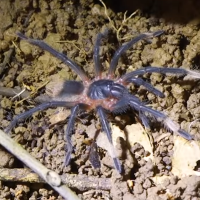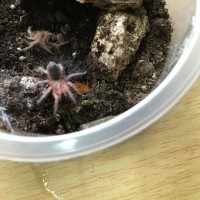Freshly moulted female approximately 3". I know there is often errors made in identification of these guys. I was actually hoping she would end up being A.steindachneri, because I love big, black, tarantulas. I am not disappointed, but I just want to clear up what species she is... if possible.
Media information
- Category
- Tarantula Identification
- Added by
- Vanessa
- Date added
- View count
- 3,344
- Comment count
- 12
- Rating
- 0.00 star(s) 0 ratings
Image metadata
- Device
- SONY SLT-A57
- Aperture
- ƒ/5
- Focal length
- 50.0 mm
- Exposure time
- 1/160
- ISO
- 100
- Filename
- DSC05048-2.jpg
- File size
- 6.2 MB
- Date taken
- Sat, 08 September 2018 1:54 AM
- Dimensions
- 3716px x 2834px







